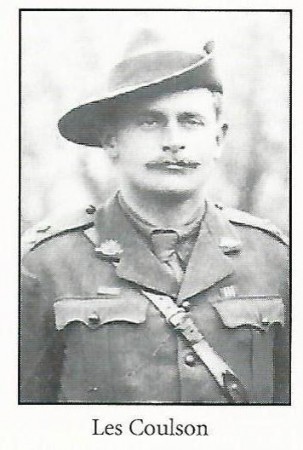WWI Story – Leonard Lutterell Coulson
Rosalie Bartlett tells the story of her father, Leonard Lutterell Coulson.
In November 1914, Leonard enlisted in the AIF with Regimental No. 1264 in the 14th Battalion C Company. His unit embarked from Melbourne in Transport A38 Ulysses on 22 December 1914, destined for Middle East Forces in Egypt.
The unit proceeded to Gallipoli on 12 April 1915. Leonard served there until the nights of the evacuation 18–19 December 1915, where he was positioned at Hotchkiss Gun Hotchkiss Gully on the Gallipoli Peninsula together with Sergeant Briggs, Privates Hester, Haines, Sorenson, Walter, Mitchell and Kendrick (see the attached entry in Leonard’s autograph book, which is now held at the Shrine of Remembrance in Melbourne).
He was shipped to Alexandria where he was transferred to the 46th Battalion and promoted to Sergeant. From there, he proceeded to Marseilles on 8 June 1916, and on to the Western Front at Poziere.
He received a recommendation for a Distinguished Conduct Medal by Brigadier General Glasford, stating he “consistently performed most excellent patrol work especially during period 5–15th August 1916 at Pozieres (Battle of Mouquet Farm) and on very wet nights of 29–30 August, on the latter of which he was wounded”.
He was subsequently awarded a Military Medal for Gallantry on 19 October 1916. He was wounded three times during his deployment in France and was promoted to 2nd Lieutenant in December 1916, then to Lieutenant in July 1917.
In September 1918, Leonard was detached to the 2nd American Corp for training purposes and continued to be involved in the main defence of the Hindenburg Line with this Corp. Following the Armistice in November 1918, Leonard was granted leave to attend Technical College in Northern England.
In October 1919, he returned to Australia where his appointment with the AIF was terminated in Melbourne in March 1920.
Leonard met his wife, Dorothy, and they were married in 1924 and had eight children. They lived in Ascot Vale, and Leonard worked for the Postmaster-General’s Department until his retirement. He died in January, 1963.







